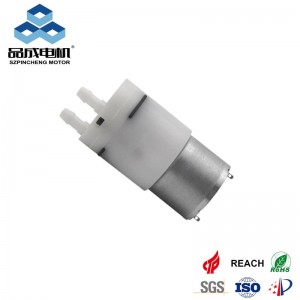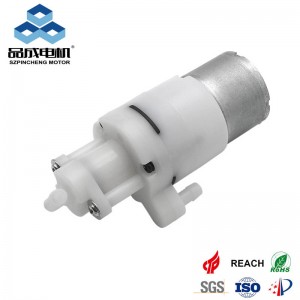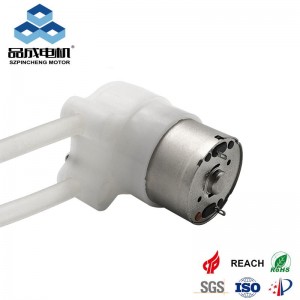Mini DC diaphragm water pumps are essential components in applications ranging from medical devices to environmental monitoring, offering precise fluid control in compact designs. However, despite their widespread use, several technical bottlenecks limit their performance, efficiency, and reliability. This article explores the key challenges facing mini DC diaphragm water pumps and highlights emerging solutions to overcome these barriers.
1. Material Limitations and Diaphragm Durability
The diaphragm is the heart of a diaphragm pump, and its material properties directly affect lifespan and performance.
Challenges
-
Fatigue Failure: Repeated flexing during operation causes micro-cracks in elastomers like rubber or silicone, leading to leaks.
-
Chemical Degradation: Exposure to aggressive fluids (e.g., solvents, saline solutions) can swell or corrode standard materials.
-
Temperature Sensitivity: Extreme temperatures (-40°C to +150°C) accelerate material hardening or softening.
Data Insight: Conventional rubber diaphragms typically fail after 10,000–20,000 cycles, while industrial pumps require 50,000+ cycles.
Innovations
-
Advanced Polymers: PTFE (Teflon) or PEEK diaphragms resist chemicals and extend lifespan to 50,000 cycles.
-
Composite Materials: Carbon fiber-reinforced elastomers improve fatigue resistance by 300%.
-
Self-Healing Coatings: Experimental materials with microcapsules release healing agents to repair cracks.
2. Energy Efficiency and Power Consumption
Mini DC diaphragm pumps often struggle to balance performance with low energy use, especially in battery-powered devices.
Challenges
-
Motor Inefficiency: Brushed DC motors waste 20–30% of energy as heat due to friction and electrical resistance.
-
Fluid Backpressure: High-pressure applications require more power, reducing battery life in portable systems.
-
Idle Energy Loss: Continuous operation at partial load wastes energy.
Case Study: A wearable medical pump consumed 40% more power than expected due to inefficient motor control.
Solutions
-
Brushless DC Motors (BLDC): Achieve 85–95% efficiency and reduce heat generation.
-
Smart PWM Control: Adjusts motor speed dynamically to match demand, saving 15–25% energy.
-
Pressure Feedback Systems: Sensors optimize pump output to minimize overwork.
3. Miniaturization vs. Performance Trade-offs
Shrinking pump size without sacrificing flow rate or pressure remains a critical challenge.
Challenges
-
Flow Rate Limitations: Smaller pumps struggle to exceed 300 mL/min while maintaining compactness.
-
Pressure Drops: Narrow fluid channels increase resistance, reducing effective output.
-
Heat Dissipation: Compact designs trap heat, risking motor burnout.
Example: A 20mm³ pump prototype failed to sustain 1 bar pressure due to overheating.
Advances
-
3D-Printed Microchannels: Optimize fluid paths to reduce turbulence and pressure loss.
-
Integrated Cooling: Micro heat sinks or phase-change materials manage thermal loads.
-
High-Torque Micro Motors: Neodymium magnet motors deliver higher power in smaller packages.
4. Noise and Vibration Control
Excessive noise limits the use of mini pumps in sensitive environments like hospitals or labs.
Challenges
-
Mechanical Vibration: Reciprocating diaphragm motion generates audible noise (40–60 dB).
-
Resonance Issues: Poorly damped systems amplify vibrations at certain frequencies.
Data Insight: Noise levels above 50 dB can disrupt medical device operation or patient comfort.
Solutions
-
Damped Mounting Systems: Silicone isolators reduce vibration transmission by 70%.
-
Precision Balancing: Laser-trimmed rotors and diaphragms minimize unbalanced forces.
-
Acoustic Enclosures: Micro pumps with sound-absorbing housings achieve <30 dB operation.
5. Manufacturing Complexity and Cost
Producing reliable mini pumps at scale requires overcoming precision engineering hurdles.
Challenges
-
Tight Tolerances: Sub-millimeter clearances demand expensive CNC machining or micro-molding.
-
Assembly Precision: Manual assembly of tiny components (e.g., valves, seals) increases defect rates.
-
Material Costs: High-performance polymers and rare-earth magnets raise production costs.
Case Study: A manufacturer faced 25% scrap rates due to diaphragm misalignment during assembly.
Innovations
-
Automated Micro-Assembly: Robotics achieve ±0.01 mm precision, reducing defects to <1%.
-
MIM (Metal Injection Molding): Produces complex stainless steel parts at lower costs.
-
Modular Designs: Pre-assembled cartridge systems simplify integration and repair.
6. Future Directions to Overcome Bottlenecks
-
AI-Driven Design: Generative algorithms create optimized geometries for flow and strength.
-
Nanomaterial Diaphragms: Graphene-enhanced composites promise unmatched durability.
-
Energy Harvesting: Kinetic or thermal energy recovery to power pumps autonomously.
PinCheng Motor: Pioneering Mini Pump Solutions
PinCheng Motor addresses these challenges through cutting-edge R&D:
-
BLDC-Powered Pumps: Achieve 50,000+ cycles with <35 dB noise.
-
Custom Material Blends: PTFE-PEEK diaphragms for chemical resistance.
-
IoT-Enabled Control: Real-time monitoring via integrated sensors.
Result: Clients report 40% longer lifespan and 30% energy savings.
Conclusion
While mini DC diaphragm water pumps face significant technical bottlenecks—from material fatigue to energy inefficiency—advances in materials science, smart control systems, and precision manufacturing are driving progress. By embracing these innovations, industries can unlock new possibilities in portable, efficient fluid control.
Keywords: mini DC diaphragm water pump, technical bottlenecks, BLDC motor efficiency, diaphragm durability, micro pump noise control
Explore Advanced Solutions:
Visit PinCheng Motor to discover high-performance mini DC diaphragm pumps tailored to your needs.
you like also all
Post time: May-16-2025




